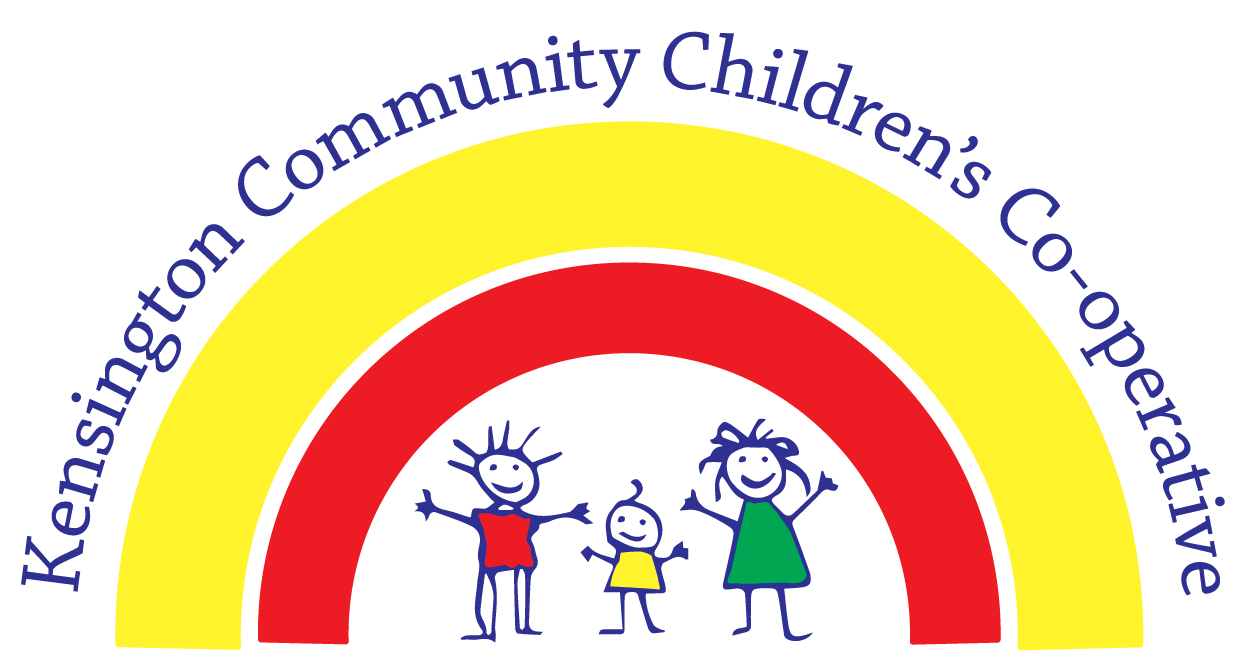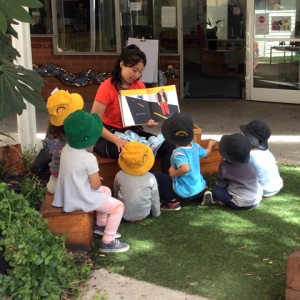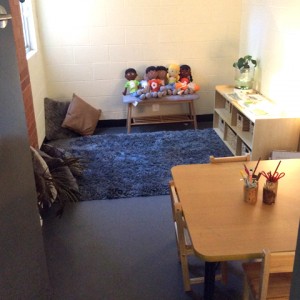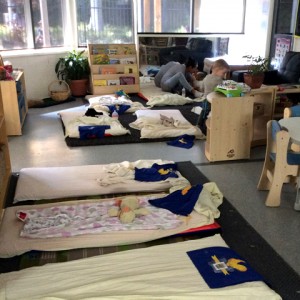This year Shazia and I were really excited to launch into implementation of some of the ideas and initiatives we gained from our Denmark host visit in October 2017. These initiates to date have included:
• Development of a teaching resource to support the existing dialogic reading program.
• The introduction of ‘The Nest’ a space designed to support the dialogic reading groups.
• A new sleep structure for the 1-3 year old age groups to further support individual routines.
Dialogic reading tools:
The Dialogic reading program has provided opportunity for KCCC to extend on children’s early literacy, relationships with peers and educators, vocabulary and more. During our visit to Denmark we had the opportunity to observe a number of dialogic reading sessions and strengthen our knowledge of this program. We identified a number of ideas in which we could strengthen at KCCC. In particular the idea of activity extension and word exploration. In Denmark each book had a pedagogy page (A program that was developed and designed by, The May Foundation) to support the pedagogues (teachers) on what to focus on.
For more information on The Mary Foundation please follow: http://kongehuset.dk/en/menu/news/introduction-of-the-mary-foundations-project-bookfun
This year we developed our own teaching tools to support educators with the sequence of Dialogic Reading. Each tool has been developed to a specific book and supports ideas on how to run and extend on the dialogic reading sessions.
Provocation Words:
Provides examples of words to explore within the book, their definitions and supports working on intentionally teaching the children particular words. Through showing, demonstrating, visualizing, dramatizing and questioning.
Questions for Book Conversations:
Provides examples of open ended questions to support extending the children’s understanding of the context of the book. This provides educators insight into what the children already know and how to further extend this.
Illustrations:
This provides suggestions on exploring the illustrations in the book with the children. This supports the children to make connections between their own experiences and knowledge of the world.
Creative Activities:
These ideas provide examples for educators to get creative with hands on experiences to link the context of the story and extend the children’s imagination.
Book Questions:
These questions are designed explore grammar, sentence structure, descriptive words and confidence. If you would like to view one of the teaching tools please do not hesitate to contact Melissa on pedagogicalleader@kccc.org.au or ask your child’s educator.
The Nest – KCCC’s Dialogic reading room
Whilst in Denmark we observed that the children moved to a different space to attend Dialogic reading sessions. This supported the children to focus on the book without other disruptions. The children also appeared to really respond with excitement when it was their turn to go to the space. After observing the children’s engagement and excitement of a special area for the dialogic reading program we decided to re-design our space for the children and educators to run Dialogic reading sessions and small group learning experiences at KCCC. To capture the Danish way of living and the culture we experienced we decided to design the space around the idea of Hygge. (Hygge (pronounced hue-guh not hoo-gah) is a Danish word used when acknowledging a feeling or moment, “Hygge involves comfort, cosiness, a sense of wellbeing, and a relaxed frame of mind” –Judith Friedman Hansen.
The space we have now created provides a quiet zone where children are provided a different space that the rooms or the hallway area that we had initially allocated. This allows time for children to slow down and be present with their peers and educators with minimal distraction. It is designed to create a cozy atmosphere and has supported children in gaining an understanding of the space through the process of moving from their room to the ‘The Nest.’
We equipped ‘The Nest’ with dialogic reading books (and the tools to support these) for a range of age groups, interests and abilities. Soft furnishing, soft lighting, activity equipment, a table, pens, pencils paper and baskets, to be filled with resources to support the extension of the creative activity section in the above tool.
KCCC Sleep Structure in the 1-3-year-old rooms
Sleep and relaxation time is something I often reflect on, having gained my teaching qualification in New Zealand and taught in integrated services that had separate sleep rooms for children. I found it really challenging when I came to Australia and observed the children sleeping in their educational environments. During our Denmark trip I observed that the service had a unique structure to their sleep routine that enabled them to support individualized routines and ensured that those children not sleeping had high quality interactions during the sleep period.
Although KCCC supports individual children’s routines during rest and relaxation times, we felt we could further strengthen children’s engagement and responsiveness to individual routines through adapting something similar.
Traditionally KCCC would set each room for children to sleep after lunch and quiet the room down, darkening the room, experiences were provided for children who did not sleep, woke early or went to sleep later. However educators were often busy with tasks involved in changing the room and supporting children to sleep at the same time, limiting the opportunity for engagement with those children awake. In Denmark they worked together to use one room as the sleep room minimizing the need for changing every room, providing more opportunity for children to continue to engage in an open setting until it was their rest time or when they woke up having a space to engage in away from the sleep area. This also supported the idea of ‘Hygee’ and a home like environment as it enabled the children to understand the difference between each environment.
We reflected on this as a team and decided to move forward with a similar idea that worked for the KCCC context. In the 1-3 year old rooms two rooms work together, one room creates a sleep room and sets this up to support children to transition into sleep time, whilst the other room remains open with educational experiences and educators are readily available and accessible.
Through roster development and reflective practice we have been able to provide a flexible and responsive environment that further supports all children’s individual routines. Children now continue to play and engage until it is their regular rest time, this has created stronger constituency in routine between home and KCCC for all children. When children wake in the sleep room they are provided as much time as they need to wake up and move into the space that is open for them to engage in. This has also enabled us to provide both an indoor/outdoor environment during this time. Roster development has ensured that children are at all times with familiar educators through ensuring that sleep room educators are a mix of both rooms educators (NQS, Element 1.1.3 Program learning opportunities: All aspects of the program, including routines, are organised in ways that maximize opportunities for each child’s learning, https://www.acecqa.gov.au/nqf/national-quality-standard/quality-area-1-educational-program-and-practice
Melissa, Pedagogical Leader




